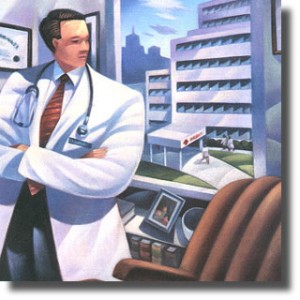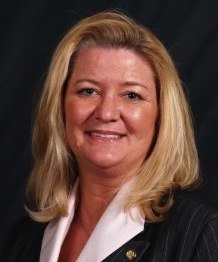Primary Care Physicians Drive Healthcare Spending
By Kelley Dunn, Senior Director with Merritt Hawkins // June 25, 2013
FEE-FOR-SERVICE STILL PREDOMINANT
EDITOR’S NOTE: Space Coast Medicine magazine and SpaceCoastDaily.com are delighted to welcome back Kelley Dunn, Senior Director with Merritt Hawkins, a national physician search firm and a company of AMN Healthcare, as a guest contributor. The impact of the developing professional demographics of the Space Coast medical community, in which physicians are increasingly moving from independent practices to hospital/hospital system employment, reflects the findings of the recently released Merritt Hawkins 2013 Survey of Physician Inpatient/Outpatient Revenue.
As hospitals and hospital systems employ more primary care physicians, vital healthcare services ordered by those physicians, such as diagnostic lab, imaging studies and diagnostic/therapeutic procedures, are provided by the hospital employers rather than independent providers. This shift of affiliation and service venue has significantly increased hospital revenue generation by primary care physicians, and, as concluded from the survey findings, demonstrates that physicians continue to control the vast majority of healthcare spending.
ATLANTA, GEORGIA–Merritt Hawkins’ newly released 2013 Survey of Physician Inpatient/Outpatient Revenue indicates that, on average, each physician generates $1,448,458 in net revenue on behalf of their affiliated hospitals each year. This figure has remained virtually unchanged since Merritt Hawkins began conducting the survey in 2002.
THE POWER OF THE PEN
This number illustrates the central role physicians continue to play in today’s evolving health system. According to the Center for Disease Control (CDC), doctors in the U.S. handle about 1.3 billion patient encounters a year–some 300 million of them in the emergency Department. It is the result of these encounters that largely determines the quality and cost of care patients receive.

Through the hospital admissions they generate, tests and treatments they order, drugs they prescribe, and procedures they perform, physicians control 87% of healthcare spending, according to a Boston University School of Health study. Though just over 20% of healthcare spending goes to physicians, doctors control much of total spending. This is why many healthcare professionals continue to rank the “physician’s pen” as the most powerful tool in healthcare.
VOLUME-BASED FEE-FOR-SERVICE PAYMENTS STILL PREDOMINATE
At some point in the future, hospitals and physicians may be compensated largely on quality and efficiency metrics. However, the future has not yet arrived.
A March 2013 report from the Catalyst for Payment Reform indicates that the great majority of payments made by commercial health plans to providers (89.1%) are still based on traditional fee-for-service models. Merritt Hawkins’ new physician revenue survey offers further evidence that volume is still what drives the bus in healthcare.
EMPLOYED PCPs INCREASINGLY IN CONTROL
Another interesting finding of the new survey is that for the first time primary care physicians (PCP–defined as family physicians, general internists and pediatricians) generated more revenue for their affiliated hospitals on average than did medical specialists. The average for PCPS as reported by the 2013 survey is $1,566,165 per year, compared to an average of $1,424,917 for the 15 medical specialties tracked in the survey.

This finding underscores a major shift that is taking place in medicine, away from the independent model in which physicians own their own practices and toward the employed model, in which hospitals and large medical groups employ doctors. As more physicians become hospital employees, particularly PCPs, they are more likely to keep tests, therapies, treatments and procedures “in house” at the hospital. That explains to some degree the increase in revenue generated by primary care doctors in the 2013 survey versus previous surveys.
In addition, new practice models such as the patient centered medical home and accountable care organizations (ACOs) are primary care driven. In these models, primary care physicians are the “quarterbacks” of the medical team and have more control over both the care patients receive and the allocation of healthcare dollars. The new Merritt Hawkins’ survey suggests that the playing field in healthcare is tilting toward primary care physicians.
The survey may be of interest to anyone who is following America’s rapidly evolving healthcare system and the key role physicians continue to play as the focal points of quality and costs. I would be happy to provide a copy to Space Coast Medicine & Active Living magazine and SpaceCoastDaily.com readers who contact me at Kelley.dunn@merritthawkins.com or at 770-481-1181.
ABOUT THE AUTHOR

Kelley Dunn is Senior Director with Merritt Hawkins, the leading physician search and consulting firm in the United States and a company of AMN Healthcare (NYSE: AHS). She earned a double major in Biology and Chemistry from the University of Georgia, a Masters degree from Florida Atlantic University, and is currently a faculty instructor with the University of Florida. With over 8 years of healthcare staffing experience, Kelley has consulted with over 2,000 clinics and hospitals in Florida.











